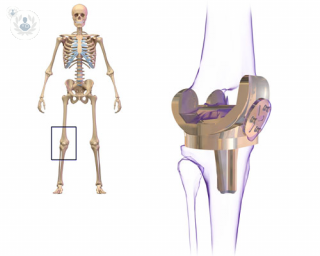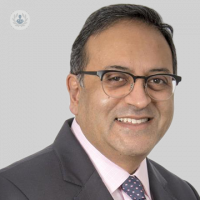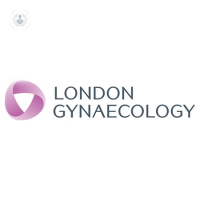What is robotic-assisted surgery?
Robotic-assisted surgery, or robotic surgery, using the da Vinci System, the Mako system by Stryker, among other systems, allows surgeons to perform surgical procedures in a very accurate way. Operations are performed with more precision, flexibility and control, compared to using conventional techniques. Robotic-assisted surgery is commonly associated with minimally invasive surgery, where procedures are performed using tiny incisions.

How does robotic-assisted surgery work?
Robotic-assisted surgery uses a camera arm and mechanical arms with surgical instruments attached to them. The surgeon is, as a direct result, able to control the arms whilst seated at a computer console near the operating table.
The surgeon has a high-definition 3D view of the surgical site and leads other team members who assist them during the surgery. The surgeon makes small cuts to insert the instruments in the patient’s body. A thin tube with a camera attached to the end of it, (just like an endoscopy), enables the surgeon to view enlarged 3D images of the patient’s body during the surgery. The robot corresponds and matches the hand movements of the doctor to perform the procedure using tiny instruments.
What is robotic-assisted surgery mainly used for?
There are many surgical procedures where robotic-assisted surgery is used. The main ones include the following:
- cardiac surgery
- colorectal surgery
- general surgery
- gynaecological surgery
- head and neck surgery
- thoracic surgery
- urological surgery
What are the advantages and risks of robotic-assisted surgery?
Surgeons who use the robotic system find that, for many procedures, it enhances control during the operation, and allows them to see the site more clearly. The benefits of minimally invasive surgery include:
- fewer complications, such as infections
- reduced blood loss and transfusions
- reduced pain and discomfort
- quicker recovery time – shorter hospitalisation and faster return to normal activities
- less noticeable scars
Despite having many benefits, robotic-assisted surgery also has its fair share of small risk factors, which may be similar to those of conventional open surgery. The main potential risks could include:
- infections
- bleeding
- mechanical failure
Who are ideal candidates for robotic-assisted surgery?
The ideal patient for the robotic-assisted procedure is someone who has not had many abdominal surgeries. Typical abdominal surgeries such as an appendectomy, gallbladder removal, and hernia repair, do not exclude individuals from having robotic surgery. The decision will be made by the surgeon. Patients with prevalent cardiovascular and pulmonary diseases may require more consideration beforehand.
How long does it take to recover from robotic-assisted surgery?
Traditional open surgery recovery time can last several months, including several days of hospitalisation. Even though every case of surgery is unique, the return to everyday activities for a patient following robotic-assisted surgery can occur in as little as two to three weeks.
11-13-2012 04-05-2024Robotic surgery
Professor Lee Jeys - Orthopaedic surgery
Created on: 11-13-2012
Updated on: 04-05-2024
Edited by: Conor Dunworth
What is robotic-assisted surgery?
Robotic-assisted surgery, or robotic surgery, using the da Vinci System, the Mako system by Stryker, among other systems, allows surgeons to perform surgical procedures in a very accurate way. Operations are performed with more precision, flexibility and control, compared to using conventional techniques. Robotic-assisted surgery is commonly associated with minimally invasive surgery, where procedures are performed using tiny incisions.

How does robotic-assisted surgery work?
Robotic-assisted surgery uses a camera arm and mechanical arms with surgical instruments attached to them. The surgeon is, as a direct result, able to control the arms whilst seated at a computer console near the operating table.
The surgeon has a high-definition 3D view of the surgical site and leads other team members who assist them during the surgery. The surgeon makes small cuts to insert the instruments in the patient’s body. A thin tube with a camera attached to the end of it, (just like an endoscopy), enables the surgeon to view enlarged 3D images of the patient’s body during the surgery. The robot corresponds and matches the hand movements of the doctor to perform the procedure using tiny instruments.
What is robotic-assisted surgery mainly used for?
There are many surgical procedures where robotic-assisted surgery is used. The main ones include the following:
- cardiac surgery
- colorectal surgery
- general surgery
- gynaecological surgery
- head and neck surgery
- thoracic surgery
- urological surgery
What are the advantages and risks of robotic-assisted surgery?
Surgeons who use the robotic system find that, for many procedures, it enhances control during the operation, and allows them to see the site more clearly. The benefits of minimally invasive surgery include:
- fewer complications, such as infections
- reduced blood loss and transfusions
- reduced pain and discomfort
- quicker recovery time – shorter hospitalisation and faster return to normal activities
- less noticeable scars
Despite having many benefits, robotic-assisted surgery also has its fair share of small risk factors, which may be similar to those of conventional open surgery. The main potential risks could include:
- infections
- bleeding
- mechanical failure
Who are ideal candidates for robotic-assisted surgery?
The ideal patient for the robotic-assisted procedure is someone who has not had many abdominal surgeries. Typical abdominal surgeries such as an appendectomy, gallbladder removal, and hernia repair, do not exclude individuals from having robotic surgery. The decision will be made by the surgeon. Patients with prevalent cardiovascular and pulmonary diseases may require more consideration beforehand.
How long does it take to recover from robotic-assisted surgery?
Traditional open surgery recovery time can last several months, including several days of hospitalisation. Even though every case of surgery is unique, the return to everyday activities for a patient following robotic-assisted surgery can occur in as little as two to three weeks.


How is robotic knee replacement performed?
By Mr Giles Heilpern
2024-11-21
In this article here, well-regarded and highly experienced consultant orthopaedic surgeon, Mr Giles Heilpern, discusses the process involved in a robotic knee replacement, whilst also outlining the associated benefits and risks. See more


Robotic surgery in prostatectomy: Advancing precision and recovery
By Professor Prokar Dasgupta OBE
2024-11-21
In the realm of medical innovation, robotic surgery stands out as a revolutionary approach, particularly in the treatment of prostate cancer through prostatectomy. At the forefront of this advancement is the da Vinci Surgical System, a sophisticated technology that has redefined surgical precision and patient outcomes. In his latest online article, renowned consultant urologist and robotic surgeon Professor Prokar Dasgupta offers his expert insight into this procedure. See more


Robotic knee surgery versus traditional methods
By Mr Ash Gulati
2024-11-21
As technology is advancing more in our everyday lives, it is evolving how procedures are done in operating theatres. One of the more advanced in orthopaedics is robotic-assisted knee surgeries. Experienced consultant trauma and orthopaedic surgeon Mr Ash Gulati explains the newer procedure and how it compares to the traditional method. See more


Robotic surgery in orthopaedics: revolutionising joint health
By Mr Al-Amin Kassam
2024-11-21
Read one of our latest medical articles here to find out you need to know about robotic surgery in orthopaedics, as revered consultant orthopaedic surgeon, Mr Al-Amin Kassam, explains all. See more
Experts in Robotic surgery
-
Professor Neil Tolley
Otolaryngology / ENTExpert in:
- Thyroid gland surgery
- Parathyroid gland surgery
- Robotic surgery
- Salivary gland surgery
- Parotid gland surgery
- Thyroid disorders
-
Mr Sean Molloy
Orthopaedic surgeryExpert in:
- Minimally invasive spinal surgery
- Scoliosis
- Spine fracture
- Robotic surgery
- Spinal surgery
- Spinal fusion
-
Mr Rahul Nath
Obstetrics & gynaecologyExpert in:
- Robotic surgery
- Abnormal smear test
- Cervical cancer
- Endometrial cancer
- Human papillomavirus (HPV)
- Ovarian cancer
-
Mr Ajit Abraham
SurgeryExpert in:
- Gallstones
- Pancreatic cancer
- Liver cancer
- Pancreatitis
- Hernia
- Robotic surgery
-
Mr Narendra Pisal
Obstetrics & gynaecologyExpert in:
- Abnormal smear test
- Endometriosis
- Fibroids
- Gynaecological cancer
- Laparoscopic hysterectomy
- Robotic surgery
- See all

Private Care at Guy's, London Bridge Hospital (HCA)
Private Care at Guy's, London Bridge Hospital (HCA)
London Bridge Hospital Private Care at Guy's, Great Maze Pond, SE1 9RT
No existe teléfono en el centro.
By using the telephone number provided by TOP DOCTORS, you automatically agree to let us use your phone number for statistical and commercial purposes. For further information, read our Privacy Policy
Top Doctors

London Gynaecology - Harley Street
London Gynaecology - Harley Street
145 Harley Street London W1G 6BJ
No existe teléfono en el centro.
By using the telephone number provided by TOP DOCTORS, you automatically agree to let us use your phone number for statistical and commercial purposes. For further information, read our Privacy Policy
Top Doctors

Westminster Bridge Consulting Rooms at St Thomas' Hospital Private Healthcare.
Westminster Bridge Consulting Rooms at St Thomas' Hospital Private Healthcare.
Westminster Bridge Road, London
No existe teléfono en el centro.
By using the telephone number provided by TOP DOCTORS, you automatically agree to let us use your phone number for statistical and commercial purposes. For further information, read our Privacy Policy
Top Doctors
-
Private Care at Guy's, London Bridge Hospital (HCA)
London Bridge Hospital Private Care at Guy's, Great Maze Pond, SE1 9RT, Central LondonExpert in:
- Head and neck cancer
- Breast Cancer
- Prostate Cancer
- Kidney Cancer
- Maxillofacial Surgery
- Robotic Surgery
-
London Gynaecology - Harley Street
145 Harley Street London W1G 6BJ, Central LondonExpert in:
- Miscarriage
- Thrush
- Minimal access surgery (keyhole surgery)
- Colonoscopy
- Ultrasound
- Pregnancy
-
Westminster Bridge Consulting Rooms at St Thomas' Hospital Private Healthcare.
Westminster Bridge Road, London , SE1 South Bank LondonExpert in:
- General Surgery
- Orthopaedic surgery
- Plastic surgery, reconstructive and aesthetics
- Endocrinology
- Obstetrics and Gynaecology
- Paediatrics
- See all
- Most viewed diseases, medical tests, and treatments
- Menopause support
- Pelvic ultrasound
- Complex endometriosis
- Undescended testicle (Cryptorchidism)
- Migraine
- Maternal mental health
- Nipple discharge
- Abdominal pain
- Minimal access surgery (keyhole surgery)
- Head and neck cancer








